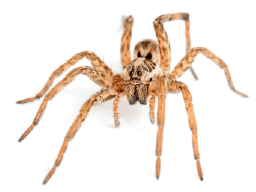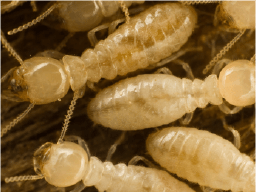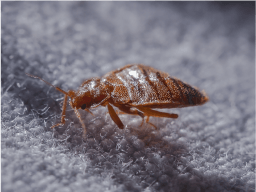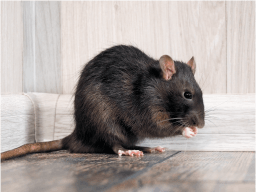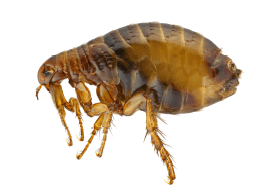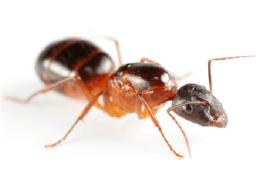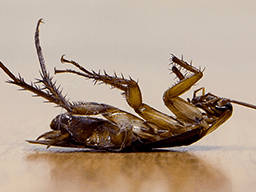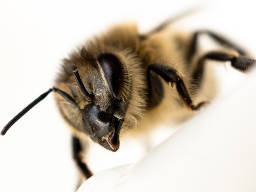Voles Versus Mice: What Are the Differences?
by Alex Schnee | February 20, 2025 | Blog

If you’ve spotted small rodents around your property or noticed damage to your plants and lawn, you might be wondering whether you’re dealing with voles or mice. While these pests might look similar at first glance, they have distinct characteristics and behaviors. Understanding these differences is crucial for implementing effective pest control measures in order to eradicate them.
What are voles?
Voles are small rodents that belong to the subfamily Arvicolinae. Often called meadow mice or field mice, these pests primarily stay outdoors and create intricate tunnel systems throughout yards and gardens.
They feed mainly on plants, particularly focusing on roots, bulbs, and tree bark. Voles are prolific breeders and can cause extensive damage to lawns, gardens, and orchards. Unlike mice, they rarely enter homes and prefer to establish their colonies in grassy or heavily vegetated areas.
What are mice?
House mice (Mus musculus) are one of the most common household pests worldwide. These small rodents have adapted to living in close proximity to humans and regularly enter buildings in search of food and shelter. They are opportunistic feeders, consuming a variety of foods including grains, seeds, and human food items.
Unlike voles, mice are excellent climbers and can easily access different areas of a building, making them particularly problematic as indoor pests.
What do voles look like?
Voles have stocky bodies measuring 4-8 inches in length, including their tail. They feature blunt, rounded snouts, small eyes, and partially hidden ears. Their fur is typically brown to grayish-brown, with lighter coloring underneath. Their most distinctive feature is their short tail, which is shorter than their body length. They have small but powerful claws used for digging their elaborate tunnel systems.
What do mice look like?
House mice are smaller than voles, typically measuring 5.5-7.5 inches including their tail. They have pointed snouts, large ears, and relatively large eyes for their size. Their fur ranges from light brown to dark gray, with lighter bellies. A key identifying feature is their long, thin tail, which is usually as long as or longer than their body. Their feet are small and equipped for both running and climbing.
What are some main differences between voles and mice?
Several key characteristics distinguish voles from mice. Voles have shorter tails, stockier bodies, and smaller ears, while mice have longer tails and larger ears. Their habitats differ significantly—voles prefer outdoor areas and create surface tunnels, while mice readily enter buildings.
Voles are primarily herbivorous, feeding on plants and roots, while mice are omnivorous opportunists. Their behavior varies too—voles tend to live in colonies and stay in their established territory, while mice are more solitary and exploratory.
What are more dangerous: voles or mice?
While both pests can cause problems, mice generally pose more significant risks to human health and property. House mice can spread numerous diseases through their droppings, urine, and saliva, including hantavirus and salmonellosis. They also cause structural damage by gnawing on electrical wiring, which creates fire hazards, and can contaminate food supplies.
Voles primarily pose risks to plants and landscapes rather than human health. Their extensive tunneling can damage root systems and create unsightly paths through lawns. While they can carry some diseases, their outdoor habits make disease transmission to humans less likely than with mice. However, their rapid reproduction rate means they can quickly cause extensive landscape damage.
Lifecycle of a vole
Voles reproduce rapidly, with females capable of breeding at one month old. They can produce 5-10 litters annually, with 3-6 young per litter. Gestation lasts about 21 days. Young voles develop quickly, weaning within three weeks and reaching sexual maturity by their first month. Their lifespan in the wild is typically 2-16 months, but their quick reproduction rate means populations can grow exponentially under favorable conditions.
Lifecycle of a mouse
House mice breed year-round in favorable conditions. Females can produce 6-8 litters yearly, with 4-7 pups per litter. Gestation spans 19-21 days. Pups are born blind and hairless but develop rapidly, opening their eyes at two weeks and weaning by three weeks. They reach sexual maturity at 6-8 weeks old. Wild mice typically live 12-18 months.
How to know if you have a vole infestation
The most obvious signs of vole activity are surface runways in lawn areas—narrow trails about two inches wide where grass has been clipped close to the ground. These trails often connect burrow openings. You might notice gnaw marks on trees and shrubs near ground level, particularly during winter months.
Fresh grass clippings and greenish droppings along the runways indicate that they are active. Damaged bulbs and root systems of plants, along with wilting or dying vegetation, can also be a sign of a vole problem.
How to know if you have a mouse infestation
Mouse infestations typically show different signs than vole activity. Look for droppings about 1/4 inch long, particularly along walls, in drawers, and under sinks. You might hear scratching sounds in walls or ceilings, especially at night.
Evidence of gnawing on food packages, wood, or wiring is common. Grease marks along walls and floors from their fur can also indicate regular travel routes. You might also notice a distinct musty odor in areas with heavy mouse activity.
Do you get rid of voles and mice the same way?
While some control methods overlap, voles and mice most often require different approaches. Vole control focuses on outdoor measures like habitat modification and underground baiting, while mouse control typically involves indoor trapping and exclusion. For both pests, consulting a professional pest control service provides the most comprehensive and effective control solutions.
How to prevent a vole infestation
Preventing vole infestations starts with habitat modification. Keep grass mowed short and remove dense ground cover that provides shelter. Install barriers around gardens and valuable plants using hardware cloth that extends at least 12 inches below ground. You’ll also want to remove weeds, leaf litter, and heavy mulch from around trees and shrubs.
Make sure to clear snow from the base of trees and shrubs in winter, since voles can tunnel through snow to access bark. Maintain a clear perimeter around your home’s foundation. Regular monitoring of your property for signs of vole activity can help catch problems early before populations expand.
How to prevent a mouse infestation
Mouse prevention focuses on exclusion and sanitation. Seal all potential entry points around your home’s exterior—remember that mice can squeeze through holes as small as a quarter inch. Pay special attention to utility entries, vents, and gaps around doors and windows.
Store food in sealed containers and clean up crumbs and spills promptly. Keep outdoor trash in sealed containers and maintain a clean perimeter around your home. Remove potential nesting sites like woodpiles and dense vegetation near the foundation. Regular inspection of your home for signs of mouse activity helps identify and address problems before they become severe.
If you’re concerned about voles or mice on your property, don’t wait for the problem to escalate. Contact a professional pest control service today from Pest Control Experts for a free inspection and customized treatment plan to protect your home and yard from these destructive rodents!





